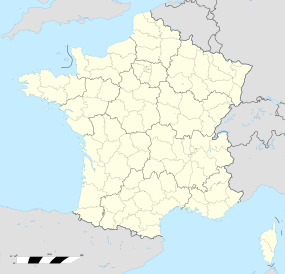Alyscamps

A road in the Alyscamps
|
|
| Location | Arles, Bouches-du-Rhône, Provence-Alpes-Côte d'Azur, France |
|---|---|
| Coordinates | 43°40′17″N 04°38′13″E / 43.67139°N 4.63694°ECoordinates: 43°40′17″N 04°38′13″E / 43.67139°N 4.63694°E |
| Type | Necropolis |
| History | |
| Founded | 4th century AD or earlier |
| Site notes | |
| Official name | (Part of) Arles, Roman and Romanesque Monuments |
| Type | Cultural |
| Criteria | ii, iv |
| Designated | 1981 (5th session) |
| Reference no. | 164 |
| Region | Europe and North America |
The Alyscamps is a large Roman necropolis, which is a short distance outside the walls of the old town of Arles, France. It was one of the most famous necropolises of the ancient world. The name comes from the Provençal Occitan word Aliscamps, who comes from the Latin Elisii Campi (that is, in French, Champs-Élysées; in English Elysian Fields). They were famous in the Middle Ages and are referred to by Ariosto in Orlando Furioso and by Dante in the Inferno.
Roman cities traditionally forbade burials within the city limits. It was therefore common for the roads immediately outside a city to be lined with tombs and mausoleums; the Appian Way outside Rome provides a good example. The Alyscamps was Arles' main burial ground for nearly 1,500 years. It was the final segment of the Aurelian Way leading up to the city gates and was used as a burial ground for well-off citizens, whose memorials ranged from simple sarcophagi to elaborate monuments.
The Alyscamps continued to be used after the city was Christianised in the 4th century. Saint Genesius, a Roman civil servant beheaded in 303 for refusing to follow orders to persecute Christians, was buried there and rapidly became the focus of a cult. Saint Trophimus, possibly the first bishop of Arles, was buried there soon afterwards. It was claimed that Christ himself attended the ceremony, leaving the imprint of his knee on a sarcophagus lid.
...
Wikipedia

